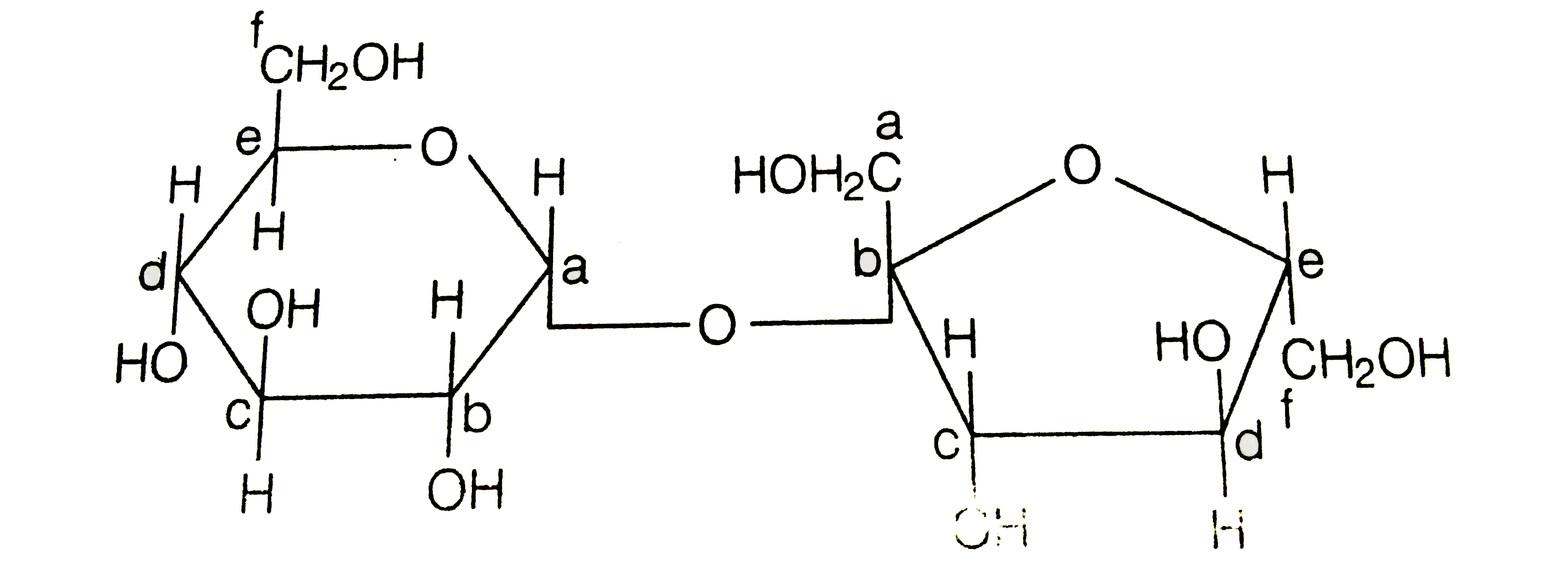Glucose and fructose can be disntiguished by
Seliqwanoff's test
Bebnedict's test
Barfoed's test
Fehling's test
To distinguish between glucose and fructose, we can follow these steps:
Step 1: Understand the Structures
- Glucose is an aldose, which means it contains an aldehyde group (-CHO).
- Fructose is a ketose, which means it contains a ketone group (C=O).
Step 2: Identify the Tests
- We need to identify which test can differentiate between an aldose and a ketose. The relevant test for this purpose is the Seliwanoff's test.
Step 3: Conduct the Seliwanoff's Test
- In Seliwanoff's test, both glucose and fructose are treated with a reagent (usually Seliwanoff's reagent, which contains concentrated hydrochloric acid and resorcinol).
- Upon heating, fructose reacts quickly to form a cherry-red color due to the formation of a furfural derivative, while glucose reacts more slowly and gives a light pink color.
Step 4: Conclusion
- Since fructose gives a quicker and more intense color change compared to glucose, we can conclude that Seliwanoff's test effectively distinguishes between glucose (aldose) and fructose (ketose).
Final Answer
- Glucose and fructose can be distinguished by Seliwanoff's test.
---
- Glucose is an aldose, which means it contains an aldehyde group (-CHO).
- Fructose is a ketose, which means it contains a ketone group (C=O).
- We need to identify which test can differentiate between an aldose and a ketose. The relevant test for this purpose is the Seliwanoff's test.
- In Seliwanoff's test, both glucose and fructose are treated with a reagent (usually Seliwanoff's reagent, which contains concentrated hydrochloric acid and resorcinol).
- Upon heating, fructose reacts quickly to form a cherry-red color due to the formation of a furfural derivative, while glucose reacts more slowly and gives a light pink color.
- Since fructose gives a quicker and more intense color change compared to glucose, we can conclude that Seliwanoff's test effectively distinguishes between glucose (aldose) and fructose (ketose).
- Glucose and fructose can be distinguished by Seliwanoff's test.
Topper's Solved these Questions
- JEE Main Revision Test-9 | JEE-2020 Book:VMC MODULES ENGLISHChapter:JEE Main Revision Test-9 | JEE-2020 Exercise:CHEMISTRY SECTION 2
Explore 5 Videos
- JEE Main Revision Test-6 | JEE-2020Book:VMC MODULES ENGLISHChapter:JEE Main Revision Test-6 | JEE-2020Exercise:CHEMISTRY
Explore 25 Videos
- JEE MAIN REVISON TEST-23Book:VMC MODULES ENGLISHChapter:JEE MAIN REVISON TEST-23Exercise:CHEMISTRY (SECTION 1)
Explore 25 Videos
Similar Questions
Knowledge Check
D-glucose & D-Fructose can be differentiated by :
AFehling solutionBTollens reagentCBenedict testDBr2/H2O
D-glucose & D-fructose can be differentiated by :
View SolutionAn aldohexose (e.g., glucose) and 2 - oxohexose (e.g., fructose) can be distinguished with the help of
View SolutionName the functional groups that distinguish glucose and fructose. How will you distinguish between the two compounds?
View SolutionFructose is a
View SolutionStructure of disaccharide formed by glucose and fructose is given below. Identify anomeric carbon atoms in monosaccharide units.

(a)a' carbon of glucose and 'a' carbon of fructose
(b)a' carbon of glucose and 'e' carbon of fructose
(c)a' carbon of glucose and 'b' carbon of fructose
(d)f' carbon of glucose and 'f' carbon of fructose
View SolutionGlucose as well as fructose are oxidized by periodic acid. The number of moles of HCOOH formed from each mole of glucose and fructose are
View SolutionGlucose and fructose are converted into C2H5OH in presence of :
View Solution

